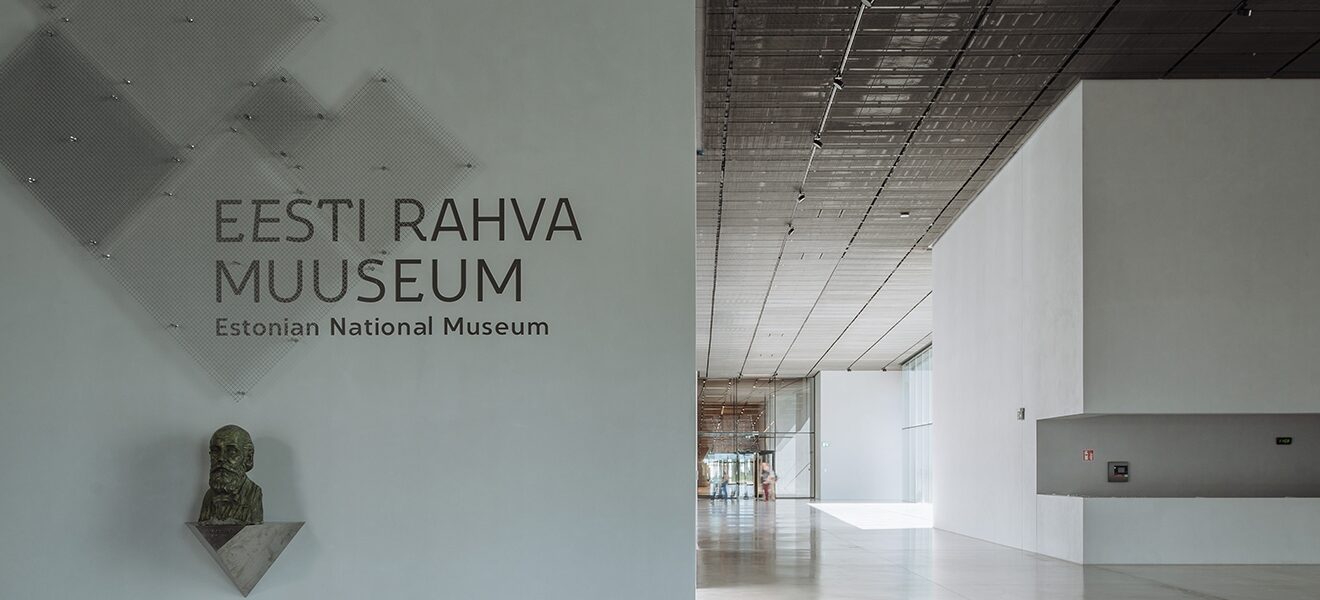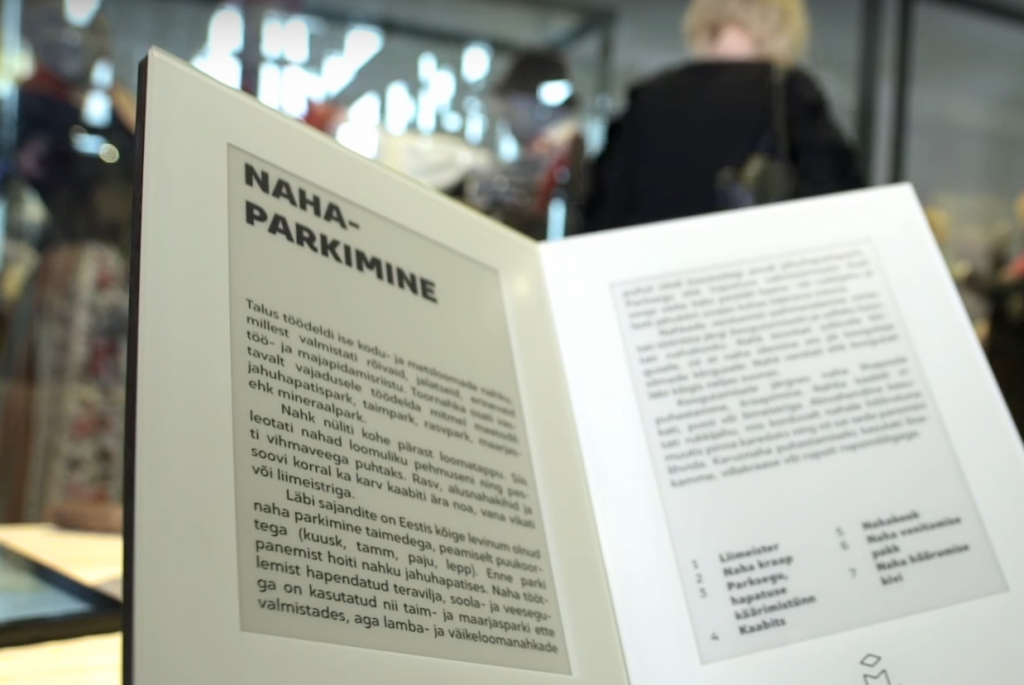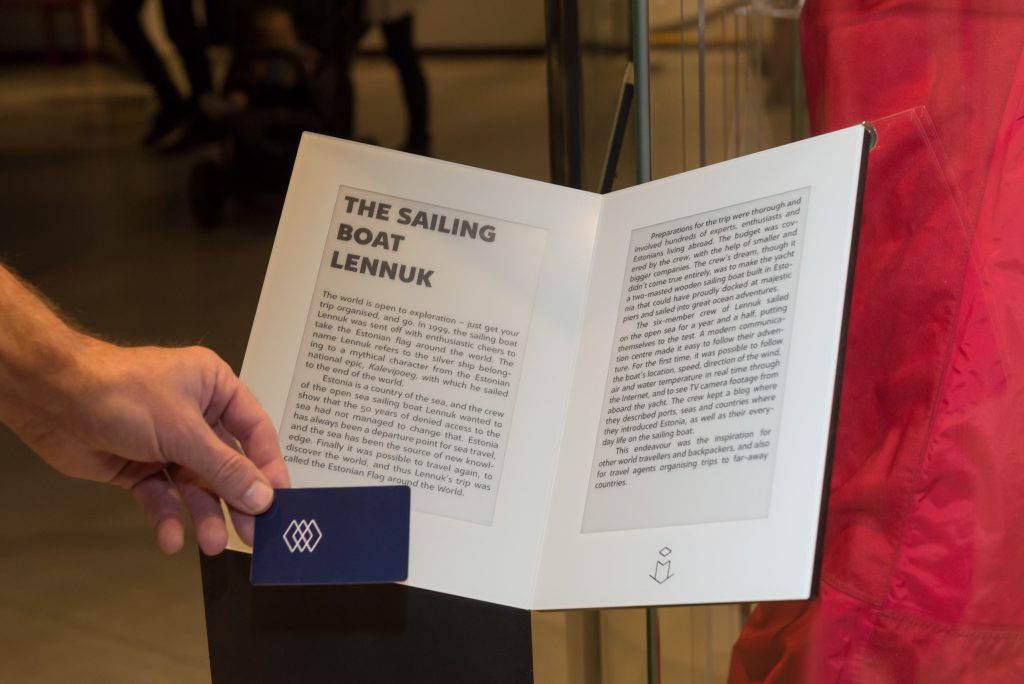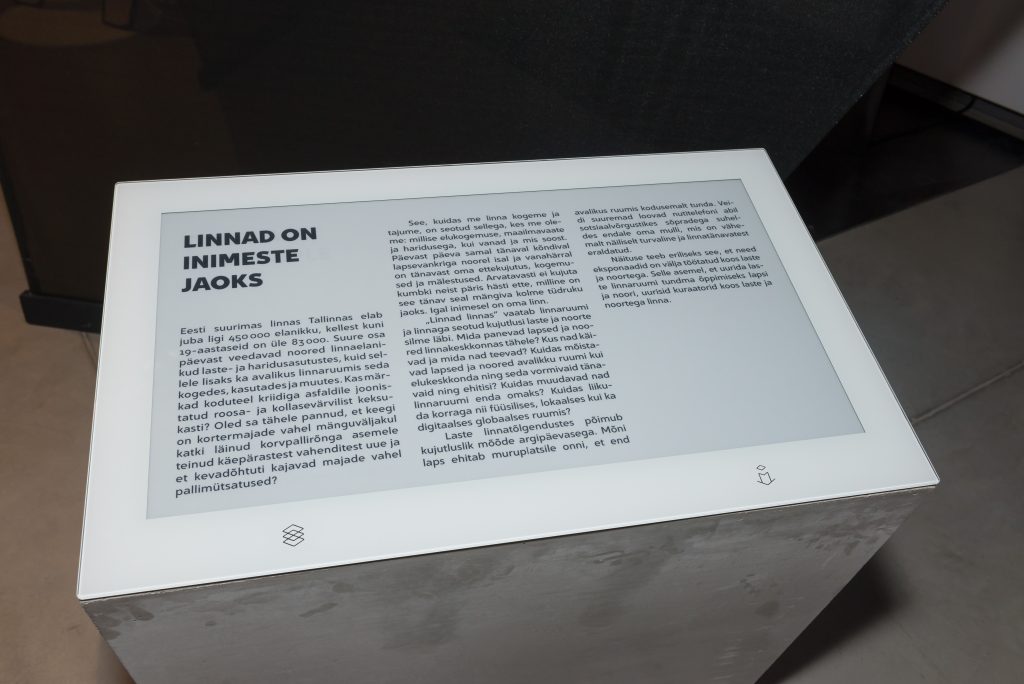

Estonian history now on electronic paper
Visionect, 21 Nov 2016
The newly opened Estonian National Museum uses E Ink displays to enhance the visitor experience. The real-time, digital gallery cards are the latest in the series of technological advancements that electronic paper is bringing to the museum space.
Design is at the very heart of the new Estonian National Museum.
Housed in a 355-meter-long sloping glass building that rises from the runway of a former Soviet airbase, the museum’s 34,000 square meters of open space required more than just basic gallery cards to showcase the exhibits on display.
The installation of eink displays in Estonia’s National Museum comes as part of a wave of smart museum signage on electronic paper ushering museums into the 21st century.
The Museum chose electronic paper technology to enhance the visitor’s experience, installing over 600 e-paper displays that offer a glimpse into Estonian daily life through the ages. The installation comes as part of a wave of smart museum signage on electronic paper ushering museums into the 21st century, be it through in-gallery digital labels or through visitor-led interactive screens.

The new Estonian National Museum uses over 600 electronic paper museum displays to enable visitors to learn about Estonian culture effortlessly.
E-paper museum labels are thin and light, using power only when changing the content on the screen. Connecting wirelessly, they are easily readable in the museum’s decor, allowing pieces of art and artifacts to remain the main focal point.
Personalized experience for museum-goers
As we wrote before, museums have begun to change and evolve with the times, using technological advancements to create a personalized experience for museum-goers through editable, real-time museum displays.
It was in in 2007 already that experts believed the future of museum technology to lie in the electronic paper option.
The low power electronic paper displays enable a sustainable architecture within the museum. E-paper museum labels are thin and light, using power only when changing the content on the screen. Connecting wirelessly, they are easily readable in the museum’s decor, allowing pieces of art and artifacts to remain the main focal point.
The recently opened Estonian National Museum is now using 32-inch, 9.7-inch and 6-inch E Ink® electronic paper screens to display valuable exhibits and wayfinding information.
A natural complement to the museum’s infrastructure, the displays not only enhance the museum’s aesthetics, but they also offer visitors a personalized experience through radio-frequency-identification (RFID) triggered language changes. Allowing the museum to go digital in a sustainable manner, the displays are powered using Power Over Ethernet (POE), eliminating the need for multiple cables to deliver power and data.
The Estonian National Museum has been open to visitors since October 1, 2016.

Electronic paper museum labels offer custom language settings, providing rich information in multiple languages. In Estonia’s National Museum, each display application interacts with radio frequency identification (RFID) tickets provided to visitors, who then glean useful information in their chosen language – Estonian, English or Russian – when they are near a display.

Electronic paper displays seamlessly blend into the museum environment and take up a minimal footprint. Estonia’s museum labels are powered using Power Over Ethernet (POE) eliminating the need for multiple cables to deliver power and data, supporting the museum’s sustainability goals.
Header image by Visit Estonia
Tags

